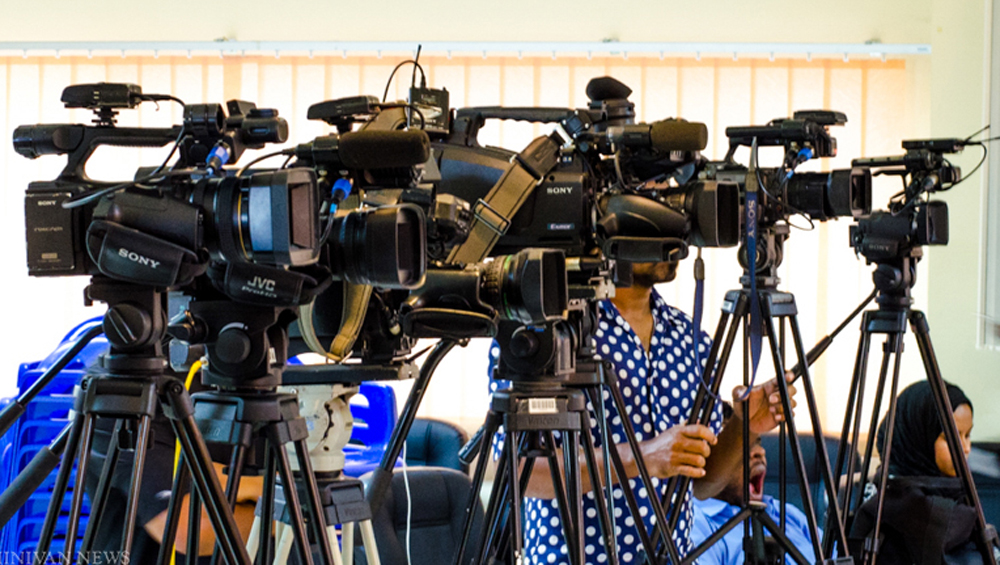
To Improve TV Reporting, Start With Station Priorities


Sean McLaughlin
I was really stressed out. My news director had just broken the news: All dayside reporters now had to turn a VOSOT (voice over, sound on tape) for the next day’s morning news. With a fresh sound bite! From a timing standpoint, how would I do this? It was 1995 or so. I was in a world of luxury and didn’t know it. I had a whole day to turn one story for the 6 p.m. news. Those were the good old days
But here’s what else I did most days. I was the state capital reporter in Springfield, Ill. I would stop by the statehouse on my way into work. I would touch base with my sources to see if anything was going on that would be reportable or make a good story. I would frequently stop by the police department and sniff around there. Frequently, I would have coffee or lunch with contacts to make sure I was on top of everything going on. This was how I got most of my stories. I always had a couple of things for the morning editorial meeting and generally controlled my own destiny. I loved that. God knows, I didn’t want to get assigned a feature story.
One of the biggest problems with local news today is the simple fact that the stories aren’t very good. They are often cookie cutter, one source, file video and they’re boring, lacking originality, depth and relevancy. But is it the fault of the reporter? Consider this: I also had a photographer every day. All I had to worry about was the journalism. I had time to be good, and I did my best to deliver.
Of my eight hours in a day, solidly six were spent on my one story, with much of the vetting done ahead of time. I could track down interviews, dig for information and devote time to the craft of telling a good story. How often do you see signs of that anymore when you watch local news?
A typical day for a reporter now invariably involves shooting their own stories, almost certainly several in a day. There’s still that pesky VOSOT for the morning news, plus content for multiple other newscasts on TV, plus Facebook, Instagram, the website, the app and OTT. Need I say more? Time is often the enemy of quality when it comes to journalistic excellence, and we see the impact all the time.
The other time drain is the infatuation with being live in as many newscasts as possible. If you are a dayside reporter, it’s not uncommon to front a story live in the 4 p.m., 5 p.m., 6 p.m., and 7 p.m. newscasts. How much time is left to devote to the reporting? Do the math. It’s very discouraging. This is a problem we have created, and it’s a problem we need to fix.
There is no reporter I’ve met who has a daily aspiration to turn out mediocre content. It is a function of the systems and unrealistic expectations that have been created in newsrooms across America. Fixing this requires difficult choices, especially at a time when expenses are under constant scrutiny because of declining ratings and revenue.
Before we can even get into discussion on how to fix this, we need to be smart in prioritizing the things we do as local media organizations. We also need to think about the opportunity before us. The disappearance of local newspapers across the U.S. has created a huge local news void in many communities. There is a lack of quality reporting being done, a lack of righting wrongs and a lack of holding public officials accountable. Imagine a world where local TV newsrooms could recreate themselves in a way that capitalizes on newspapers’ decline? Don’t get me wrong, the loss of newspapers is a tragedy that is bad for everyone. But someone needs to fill that void, and local TV stations are uniquely positioned to do that.
But that’s not what is happening. Instead, TV newsrooms continue to invest less in reporting resources. There are fewer reporters and they’re making less money. What’s the impact? Fewer reporting resources means less content, and less content means more pressure on existing reporters and photographers to fill more time, because there are more newscasts and digital products than ever before.
Does this sound familiar? Do you remember the first time you picked up the newspaper and though, “Wow, there’s nothing in here”? We are repeating the same mistake as we speak, and we face a similar fate if we don’t quickly alter course.
There are only two ways I see being able to meaningfully fix this, pending an FCC rethink of ownership rules, which seems unlikely anytime soon. The first is a reallocation of resources from other roles inside the TV station to reporting roles. The second is going back to what many broadcasters did during the Great Recession — sharing field resources. Both have obvious drawbacks.
A resource reallocation requires difficult decisions, looking into roles stations don’t need anymore and roles that have been or can be replaced by technology. Let me encourage one place to start: Analyze exactly where money is spent right now within the news budgets. If reporting is the most important thing local stations do, is this where the money is being spent? If everything else is less important, the options become clearer. I didn’t say this was easier. And I am not suggesting that only a few positions need to be identified. Rather, I am suggesting many. The local reporting staffs at TV stations aren’t a little too small, they are far too small.
Then we must consider the idea of working together, or “co-oping” field resources. The experience in the late 2000s had some things that worked well and many that didn’t. But what if we made moves inside local markets to pool most field resources? In a mid-market, each station contributes three-four reporting crews and a team representing each station contributing makes decisions on how to use these resources on news of the day. From here, each market can use whatever they have left for enterprise, investigative or other brand-specific content. There are a lot of reasons this can’t work, but what if instead we focused on the reasons it has to work? Each station would have a lot more content than they have now and would differentiate through presentation approaches.
There are pros and cons to each approach, but something big needs to happen and soon. There are other things that are simpler and that stations can start today to — at minimum — elevate their quality.
Here are a few:
- Eliminate live shots other than when they’re needed for breaking news or changing stories.
- Allow workdays on occasion for reporters to develop better stories.
- Assign news beats or areas of focus.
- Put in place a quality filter articulating things each story needs to have from a quality standpoint. Implement a robust planning process inclusive of what reporters are working on in advance.
This is a lot to ponder, but if we are going to get serious about fixing local news, we need to recognize the reporting needs to be better. It’s going to take major change to make it happen.
Veteran local TV news executive Sean McLaughlin most recently was SVP, local news, for the E.W. Scripps Co.
































Comments (2)
Former Producer says:
March 15, 2024 at 7:44 am
One of two things needs to happen in order to give reporters more time to actually develop and turn good stories:
1. HIRE MORE REPORTERS
The simplest solution can be the hardest to implement. Hiring more reporters means spending more money, and that’s something that today’s broadcast industry is hesitant to do. Sure, money can be shifted around in the budget, but that also comes at a cost. Sean, you know this, since Scripps’ decision to hire more reporters and pay them better salaries meant other people had to lose their jobs.
Let’s not forget that it’s harder than ever to hire people in TV news. Few people want to work in this business.
2. CUT BACK ON THE DAILY NEWSCASTS
Here’s an actual weekday news schedule from a top-ten market network news affiliate:
4:30 am – 7:00 am
7:00 am – 9:00 am (digital subchannel)
9:00 am – 9:30 am
9:30 am – 10:00 am (sponsored lifestyle/news show)
12:00 pm – 12:30 pm
3:00 pm – 3:30 pm
3:30 pm – 4:00 pm (digital subchannel)
4:00 pm – 6:30 pm
7:00 pm – 7:30 pm
10:00 pm – 11:00 pm (digital subchannel)
11:00 pm – 11:35 pm
That is 11.5 hours of live news produced every weekday! What’s the point? Money, that’s the point! More local news means more local ads the salespeople can sell. Broadcasters aren’t going to cut off a source of revenue when they need every dollar they can get — overworked reporters be damned.
The takeaway? These are good ideas that aren’t going to happen, because the broadcast industry’s executives only see things quarter to quarter and in dollars and cents.
Digital Manager says:
March 20, 2024 at 2:12 pm
Sir you over estimate the quality of reporters there are in this field. Many reporters don’t have the fundamental journalism skills you had. Many also aren’t at a station long enough to develop quality sources like you did. The amount of reporters who come to the table with no story pitches is demoralizing and it never gets better. These young kids are over taxed, but they also rarely truly invest in getting to know the community they are reporting on because they’ll be gone soon anyway.